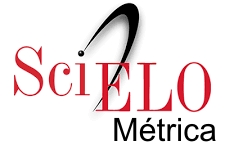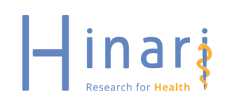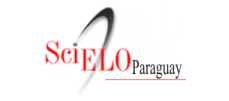Características clínicas de los pacientes con crisis hipertensivas que acuden a un Servicio de emergencias médicas
Resumen
Introducción: los niveles de presión arterial por encima de las cifras normales aumentan el riesgo de padecer enfermedades cardiovasculares y cerebrales. Las complicaciones ocasionadas por las crisis hipertensivas son muy peligrosas y a menudo fatales. Es de suma importancia conocer bien sus características clínicas para tratar de contrarrestar su evolución.
Objetivo: describir el comportamiento de las crisis hipertensivas en 500 pacientes del Servicio de Emergencias del Hospital de Clínicas, en el período de enero a junio de 2018.
Metodología: estudio descriptivo y retrospectivo. Se utilizaron las hojas de recepción, acogida y clasificación de urgencias y las historias clínicas de pacientes ingresados con crisis hipertensivas. Se emplearon frecuencias absolutas y relativas (porcentaje) para resumir la información, y tablas para su presentación.
Resultados: en el estudio predominó el sexo masculino, con 351 (70%) pacientes, y 149 (30%) de sexo femenino. El grupo etario en el que existió mayor predominio de pacientes (49%) fue el de 50-59 años de edad. Se observó un predominio de las urgencias hipertensivas con 399 (79,8%) pacientes, mientras que solo 101 (20,2%) pacientes desarrollaron emergencias hipertensivas. El órgano diana más frecuentemente dañado fue el cerebro en 43 (42,6%) pacientes con un accidente vascular cerebral, seguido por el síndrome coronario agudo en 34 (33,7%) pacientes. La alteración electrocardiográfica mas frecuente fue la hipertrofia del ventrículo izquierdo en 187 (37,4%) pacientes, y en segundo lugar se encontró el supradesnivel del ST, que se presentó en 111 (22,2%) pacientes.
Conclusión: las complicaciones y los hallazgos más significativos en estos pacientes con crisis hipertensivas fueron los accidentes vasculares encefálicos y el síndrome coronario agudo, así como la hipertrofia del ventrículo izquierdo y la elevación del segmento ST dentro de las alteraciones electrocardiográficas.
Citas
Brathwaite L, Reif M. Hypertensive emergencies: A review of common presentations and treatment options. Cardiol Clin. 2019; 37(3): 275–86. doi: 10.1016/j.ccl.2019.04.003
Waldron FA, Benenson I, Jones-Dillon SA, Zinzuwadia SN, Adeboye AM, Eris E, et al. Prevalence and risk factors for hypertensive crisis in a predominantly African American inner-city community. Blood Press. 2019; 28(2): 114-23. doi: 10.1080/08037051.2019.1568183.
Mannesse CK, Vondeling AM, van Marum RJ, van Solinge WW, Egberts TC, Jansen PA. Prevalence of hyponatremia on geriatric wards compared to other settings over four decades: a systematic review. Ageing Res Rev. 2013; 12(1):165-73.
Nakalema I, Kaddumukasa M, Nakibuuka J, Okello E, Sajatovic M. Prevalence, patterns and factors associated with hypertensive crises in Mulago hospital emergency department; a cross-sectional study. Afr Health Sci. 2019; 19(1):1757-67. doi.10.4314/ahs. v19i1.52.
Cumming K, Hoyle GE, Hutchison JD, Soiza RL. Prevalence, incidence and etiology of hyponatremia in elderly patients with fragility fractures. PLoS One. 2014; 9(2):e88272.
Sobamowo H, Prabhakar SS. The kidney in aging: physiological changes and pathological implications. Prog Mol Biol Transl Sci. 2017; 146:303-40.
Chobanian AV, Bakris GL, Black HR, Cushman WG, Green LA, Izzo JL, et al. The seventh report of the Joint National Committee on Prevention, Detection, Evaluation, and Treatment of High Blood Pressure: the JNC 7 report. JAMA. 2003; 289(19):2560-72.
Sylvanus E, Sawe HR, Muhanuzi B, Mulesi E, Mfinanga JA, Weber EJ, et al. Profile and outcome of patients with emergency complications of renal failure presenting to an urban emergency department of a tertiary hospital in Tanzania. BMC Emerg Med. 2019; 19(1):11. doi: 10.1186/s12873-019-0229-2.
Saiz González de la Peña BA, Vázquez Vigoa A, de la Noval García R, Dueñas Herrera A, Quirós Luis JJ, Debs Pérez G. Tratamiento farmacológico y no farmacológico de la hipertensión arterial: estudio de 200 casos. Rev cubana med. 2002; 41(3): 152-6.
Llanio NR. Propedéutica clínica y semiología médica. La Habana: Editorial Ciencias Médicas; 2003.
Joint National Committee on the Detection, Evaluation and Treatment of High Blood Pressure (JNVC). Arch Intern Med. 2002; 153:153-83.
Florat García G, García Fernández R, Hernández Veliz D, García Barreto D. Crisis hipertensivas. Rev Cubana Cardiol Cir Cardiovas. 2000; 14(2):81-93.
National High Blood Pressure Education Program Working Group report of primary prevention of hypertension. Arch Intern Med. 1993; 153(2):186-208.
Roccella EJ. Consideraciones epidemiológicas para definir la HTA. Clín Med Norteam. 2003; 71:815-31.
Becker CE, Benowitz NL. Hypertensive emergencies. Med Clin North Am. 2000; 63:127-40.
Valdesuso RM, García D. Tratamiento de la emergencia hipertensiva. Rev Cubana Cardiol Cir Cardiovas. 1994; 8:4-12.
Pérez Tomero E, Juárez Alonso S, Laguna del Estal P. Crisis hipertensivas en los servicios de urgencias hospitalarios. Emergencias. 2001; 13:82-8.
Dyer AR, Stamler J, Greenland P. Associations for weight change and weight variability with cardiovascular an all-cause mortality in the Chicago western electric company study. Am J Epidemiol. 2000; 152( 4): 324- 33.
Taylor DA. Hypertensive crisis: A review of pathophysiology and treatment. Crit Care Nurs Clin North Am. 2015; 27(4):439–47.
Ipek E, Oktay AA, Krimb SR. Hypertensive crisis: an update on clinical approach and management. Curr Opin Cardiol. 2017; 32(4): 397-406.
Menéndez E, Delgado E, Fernández-Vega F, Prieto M, Bordiú E, Calle A, et al. Prevalencia, diagnóstico, tratamiento y control de la hipertensión arterial en España. Resultados del estudio Di@bet.es. Rev Esp Cardiol. 2016; 69(6):572–8.
Varounis C, Katsi V, Nihoyannopoulos P, Lekakis J, Tousoulis D. Cardiovascular hypertensive crisis: Recent evidence and review of the literature. Front Cardiovasc Med. 2017; 3:51.
Suneja M, Sanders ML. Hipertensive emergency. Med Clin North Am. 2017; 101(3):465–78.
Patel KK, Young L, Howell EH, Hu B, Rutecki G, Thomas G, et al. Characteristics and outcomes of patients presenting with hypertensive urgency in the office setting. JAMA Intern Med. 2016; 176(7):981–8.
Johnson W, Nguyen M, Patel R. Hypertension crisis in the emergency department. Cardiol Clin. 2012; 30(4):533–43.
Levy PD, Mahn JJ, Miller J, Shelby A, Brody A, Davidson R, et al. Blood pressure treatment and outcomes in hypertensive patients without acute target organ damage: A retrospective cohort. Am J Emerg Med. 2015; 33(9):1219–24.
Grassi D, O’Flaherty M, Pellizzari M, Bendersky M, Rodriguez P, Turri D, et al. Hypertensive urgencies in the emergency department: Evaluating blood pressure response to rest and to antihypertensive drugs with different profiles. J Clin Hypertens. (Greenwich). 2008; 10(9):662–7.
Park SK, Lee DY, Kim WJ, Lee SY, Park HS, Kim HW, et al. Comparing the clinical efficacy of resting and antihypertensive medication in patients of hypertensive urgency: A randomized, control trial. J Hypertens. 2017; 35(7):1474–80.
Whelton PK, Carey RM, Aronow WS, Casey DE Jr, Collins KJ, Dennison Himmelfarb C, et al. 2017 ACC/AHA/AAPA/ABC/ACPM/AGS/APhA/ASH/ASPC/NMA/PCNA guideline for the prevention, detection, evaluation, and management of high blood pressure in adults: a report of the American College of Cardiology/American Heart Association Task Force on Clinical Practice Guidelines. Hypertension 2018; 71(6):e13–115.
Ortellado Maidana J, Ramírez A, González G, Olmedo Filizzola G, Ayala de Doll M, Sano M, et al. Consenso paraguayo de hipertension arterial 2015. Rev. virtual Soc. Parag. Med. Int. 2016; 3(2):11-57.
Salkic S, Batic-Mujanovic O, Ljuca F, Brkic S. Clinical presentation of hypertensive crises in emergency medical services. Mater Sociomed. 2014; 26(1):12–6.
Shah M, Patil S, Patel B, Arora S, Patel N, Garg L, et al. Trends in hospitalization for hypertensive emergency, and relationship of end-organ damage with in-hospital mortality. Am J Hypertens 2017; 30(7):700–6.
Kotchen TA. Historical trends and milestones in hypertension research: a model of the process of translational research. Hypertension. 2011; 58(4):522–38.
Amraoui F, Van Der Hoeven NV, Van Valkengoed IG, Vogt L, Van Den Born BJ. Mortality and cardiovascular risk in patients with a history of malignant hypertension: a case control study. J Clin Hypertens (Greenwich). 2014; 16(2):122–6.
Andrade DO, Santos SPO, Pinhel MAS, Valente FM, Giannini MC, Gregório ML, et al. Effects of acute blood pressure elevation on biochemical metabolic parameters in individuals with hypertensive crisis. Clin Exp Hypertens. 2017; 39(6):553–61.
Powers WJ, Rabinstein AA, Ackerson T, Adeoye OM, Bambakidis NC, Becker K, et al. 2018 Guidelines for the early management of patients with acute ischemic stroke: a guideline for healthcare professionals from the American Heart Association/American Stroke Association. Stroke. 2018; 49(3):e46–110.
Benjamin EJ, Virani SS, Callaway CW, Chamberlain AM, Chang AR, Cheng S, et al. Heart disease and stroke statistics—2018 update: a report from the American Heart Association. Circulation. 2018; 137(12):e67–492.
Freda BJ, Knee AB, Braden GL, Visintaines PF, Thakar CV. Effect of transient and sustained acute kidney injury on readmissions in acute decompensated heart failure. Am J Cardiol. 2017; 119(11):1809–14.
Wan SH, Slusser JP, Hodge DO, Chen HH. The vascular-renal connection in patients hospitalized with hypertensive crisis: a population-based study. Mayo Clin Proc Innov Qual Outcomes. 2018; 2(2):148–54.
Peixoto AJ. Acute severe hypertension. N Engl J Med. 2019; 381(19):1843-52.

















